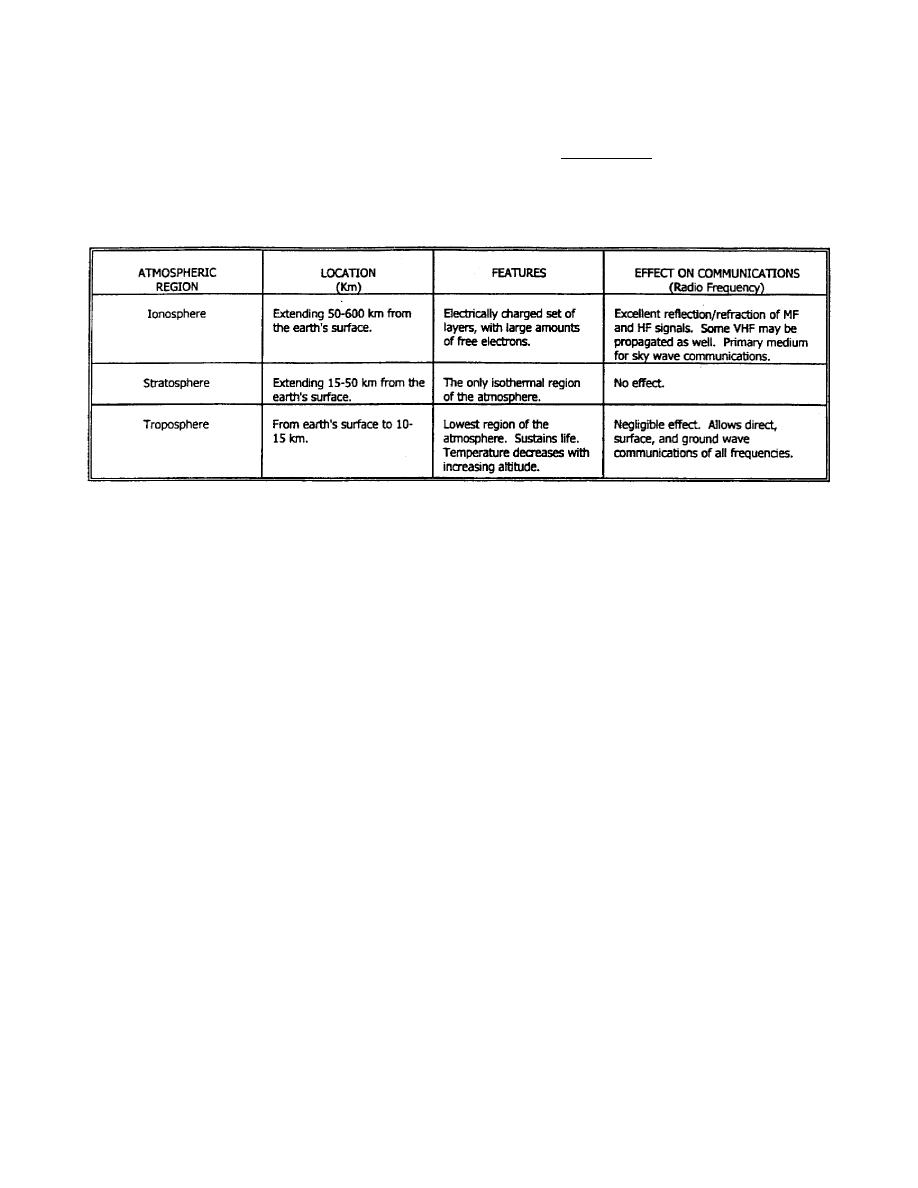
The earth's atmosphere plays a crucial role in long distance radio communications. Radio
waves may be reflected in the atmosphere and returned to earth. This technique is discussed
later in this lesson. As shown in Table 2, the atmosphere consists of multiple layers, of which
only a few have any discernible effect on radio waves. The ionosphere is the primary layer
that is used to return a radio wave back to earth.
Table 2. Characteristics of the atmosphere.
The ionosphere is a region of ionized (electrically charged) gasses located approximately 50-
600 kilometers (km) above the earth's surface. As illustrated in Table 3, there are essentially
four layers (D, E, F1, and F2) of the ionosphere which affect communications and DF. These
layers vary in ionization and height above the earth's surface, depending on the amount of
exposure to the sun.
The ionosphere is formed when extreme ultraviolet light from the sun strips the electrons from
neutral atoms in the ionosphere. Thus, the electrons become free (unbound), and the
remaining atom becomes positively ionized. The free electrons reflect/refract radio waves of
a certain frequency. Due to this process, the E and F layers become positively ionized.
However, the free electrons may attach to neutral atoms. When such attachments occur, the
atoms become negatively ionized. This process is common in the D layer, making the region
of the ionosphere negatively ionized. Factors which influence the ionosphere and its effect on
radio waves include--
The time of day.
The seasons of the year.
Solar flares.
Magnetic storms.
Certain man-made disturbances such as nuclear detonations.
IT0302
1-6



 Previous Page
Previous Page
